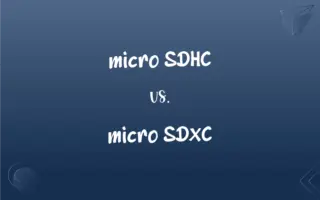Parliamentary Form of Government vs. Presidential Form of Government: What's the Difference?
Edited by Aimie Carlson || By Janet White || Published on February 15, 2024
In a parliamentary system, the government is elected from the legislative body and closely linked to it, whereas in a presidential system, the President is elected separately and functions independently from the legislature.

Key Differences
In a parliamentary system, the government's power is intertwined with the legislative body, typically with the prime minister leading the government while being a member of the parliament. This contrasts with the presidential system where the president, elected independently of the legislature, serves as both the head of state and government, overseeing the executive branch separately from the legislative.
The parliamentary form of government is characterized by a dual executive system, where the head of state (often a monarch or president) is different from the head of government (prime minister). In contrast, in the presidential form of government, the president fulfills both roles, embodying the unity of the executive branch.
In the parliamentary system, the government is accountable to the parliament, with the potential for a vote of no confidence. This contrasts with the presidential system, where the president has a fixed term and is less directly accountable to the legislative body, offering a potentially more stable but less flexible administration.
The parliamentary form of government requires a close relationship between the executive and the legislative branches, as the government must maintain the confidence of the legislature. In contrast, the presidential form of government allows for a clearer separation of powers, with the president and the legislature operating independently.
In a parliamentary system, the fusion of legislative and executive functions can lead to more efficient policy-making when one party controls the majority. However, in a presidential system, the distinct separation can lead to checks and balances but also potential gridlock between the executive and legislative branches.
ADVERTISEMENT
Comparison Chart
Leadership
Dual executive system (separate head of state and government)
Unified executive (president as both head of state and government)
Election
The head of government is usually not directly elected
The president is directly elected
Relationship with Legislature
Government is accountable to and often formed by the legislature
Clear separation from the legislature
Tenure
Government can be dissolved with a vote of no confidence
Fixed tenure for the president
Policy Making
Efficient in a majority government; potential deadlock in coalitions
Potential for gridlock due to separation of powers
ADVERTISEMENT
Parliamentary Form of Government and Presidential Form of Government Definitions
Parliamentary Form of Government
A system where the executive derives authority from and is accountable to the legislature.
In the parliamentary form of government, the prime minister can be ousted by a no-confidence vote in the parliament.
Presidential Form of Government
A system where the president is both the head of state and government, elected independently.
In the presidential form of government, the president's authority is separate from the legislative body.
Parliamentary Form of Government
A structure where the executive and legislative branches are interconnected.
The parliamentary form of government often leads to a blending of legislative and executive powers.
Presidential Form of Government
A political system with a clear separation of powers between the executive and legislature.
The presidential form of government ensures checks and balances between different branches.
Parliamentary Form of Government
A governance model with a dual executive: a ceremonial head of state and a head of government.
In countries with a parliamentary form of government, the president often plays a ceremonial role.
Presidential Form of Government
A structure where the president has a fixed term and is not directly accountable to the legislature.
In the presidential form of government, the president serves for a specific term regardless of legislative changes.
Parliamentary Form of Government
A governance type where the prime minister leads the government and is a member of the legislature.
In the parliamentary form of government, the prime minister must be an elected member of the parliament.
Presidential Form of Government
A governance model with a singular executive branch under the president.
The presidential form of government centralizes executive power in the president.
Parliamentary Form of Government
A political system where the government's legitimacy comes from the parliament's support.
The stability of a parliamentary form of government depends on the ruling party's majority in the parliament.
Presidential Form of Government
A governance type with independent executive leadership elected by the populace.
In the presidential form of government, the president's election is separate from legislative elections.
FAQs
How can a government be dismissed in this system?
Through a vote of no confidence in the legislature.
What is a Parliamentary form of government?
It's a system where the government is appointed from the legislative branch, and the executive and legislative branches are interconnected.
Does the head of state differ from the head of government?
Yes, in many cases, the head of state (like a monarch or president) is separate from the head of government (Prime Minister).
What are the main characteristics of a Parliamentary system?
Key features include a fusion of powers, collective responsibility, and a Prime Minister who leads the government.
What role does the public play in electing the government?
The public typically elects the legislative assembly, which in turn selects the government.
How does this system ensure government stability?
Through party discipline and the ability to dissolve the legislature for new elections.
How is the President elected?
Typically through a direct or indirect public election, separate from the legislative election.
How is the head of government selected?
The head of government, usually a Prime Minister, is typically appointed from the majority party in the legislature.
What is a Presidential form of government?
It's a system where the executive branch is separate from the legislature, and the President is both the head of state and government.
What are the key features of a Presidential system?
Features include fixed terms for the President, separation of powers, and independent executive authority.
What is the role of political parties in this system?
Political parties are crucial, as the party with the majority forms the government.
What role do political parties play in this system?
They are important for elections but have less direct control over government formation and operation.
How is the government formed in this system?
The President appoints cabinet members, often subject to legislative approval.
Can the head of state dissolve the government?
In some parliamentary systems, yes, the head of state can dissolve the government, often on the advice of the Prime Minister.
How can a President be removed from office?
Generally through an impeachment process by the legislature.
How does this system handle executive-legislative conflicts?
Through checks and balances, and sometimes through the courts.
Can the President be a member of the legislature?
No, the President cannot be a member of the legislature, ensuring separation of powers.
How is policy-making different in this system?
Policy-making can be more executive-driven, with legislative approval required for major initiatives.
How does this system handle legislative deadlock?
Through mechanisms like early elections or coalition building.
What happens in case of a legislative deadlock?
The President may have limited options like calling special legislative sessions but can't dissolve the legislature.
About Author
Written by
Janet WhiteJanet White has been an esteemed writer and blogger for Difference Wiki. Holding a Master's degree in Science and Medical Journalism from the prestigious Boston University, she has consistently demonstrated her expertise and passion for her field. When she's not immersed in her work, Janet relishes her time exercising, delving into a good book, and cherishing moments with friends and family.
Edited by
Aimie CarlsonAimie Carlson, holding a master's degree in English literature, is a fervent English language enthusiast. She lends her writing talents to Difference Wiki, a prominent website that specializes in comparisons, offering readers insightful analyses that both captivate and inform.






































































